Keeping a cool house this summer
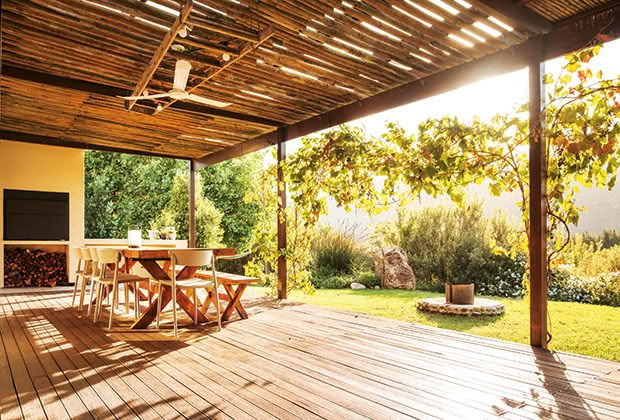
With the risk of heatwaves set to increase in New Zealand, eco-design specialist Nelson Lebo shares the science and strategies of maintaining a cool temperature in your house over the summer.
Words: Nelson Lebo
Most New Zealand houses were not built for heat waves – or cold spells for that matter. Cold in winter, hot in summer; that’s the bulk of New Zealand homes in a nutshell. Whether they are 100 years old or brand new, the tendency of kiwi homes to overheat usually relates to a few common issues.
INSUFFICIENT CEILING INSULATION
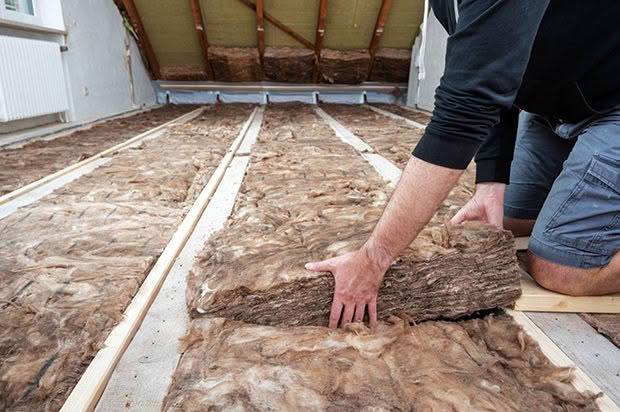
Ceiling insulation is effective at retaining warmth in winter. It has been subsidised by the central government for over a decade for this reason. However, it also has a role to play in keeping homes cool in summer.
In cold weather, a home should function rather like a thermos – an insulated container holding in warmth for extended periods of time. But in order to maximise thermal performance in summer, we should also start thinking of our home as a chilly bin – keeping coolness in and heat out for as long as possible.
When it comes to insulation, there’s always a hot side and a cold side. On a winter’s night in a well-insulated house, the ceiling cavity is cold and the lounge is warm. But during the day in summer, the situation is reversed. The point of insulation is to reinforce this barrier and maintain the temperature in the right places.
INSUFFICIENT EAVES TO THE NORTH
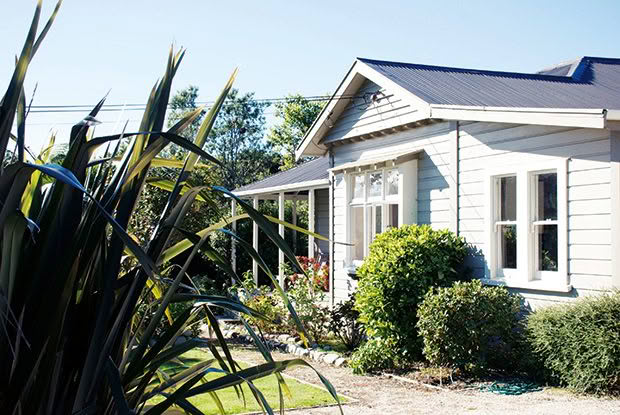
Eaves that are too short may not block out much sun. Too many glazed windows to the west may lead to a house overheating in the afternoon.
Eaves on a house work the same way as a baseball cap shading your eyes and face from the sun. Without one, direct light will hit your face, possibly leading to sunburn and overheating. Without eaves on the north-facing side of your house, direct midday sun is able to hit your windows and penetrate your house, leading to an intensely hot indoor environment.
Properly sized and positioned eaves block the high summer sun but allow the low winter sun to enter the home when we need it.
TOO MUCH WEST-FACING GLAZING
This overheats homes no matter how wide their eaves. In summer, the late afternoon sun drops low in the sky, bathing the western side of houses in warmth. It’s not uncommon for a home that keeps out midday sun to be inundated with afternoon sun due to too many windows and doors looking west.
During the summer months, most families occupy their homes from late afternoon onwards, just as their home is at its hottest.
For example, last year I was called by a couple to visit their brand-new home in Palmerston North, which was overheating in the open living area even when the heat pump was set on cooling mode. They reported that the space was unbearable on sunny summer afternoons and evenings.
When I arrived, it was clear the reason was too much west-facing glazing – essentially a wall of glass that included a large ranch slider with sidelights as well as another large window. The couple – recent arrivals from Australia – could not believe they were struggling with the heat more in New Zealand than in their home country.
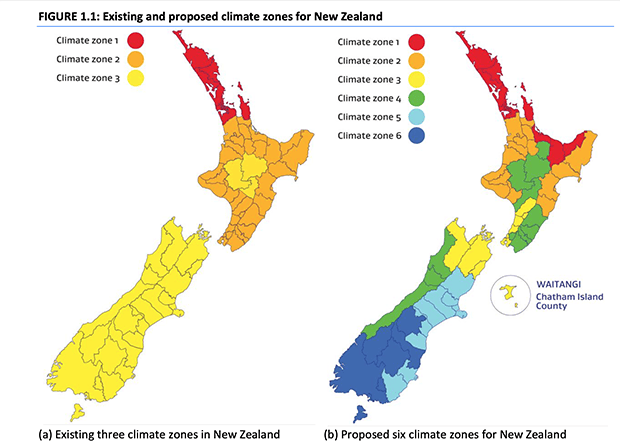
HOW TO DESIGN A HOME THAT DOESN’T OVERHEAT?
Designing and building a new home that’s warm in winter and cool in summer is remarkably simple. It all comes down to the following principles:
Orientation
In NZ, the most comfortable and efficiently-designed home is a rectangle on an east-west axis. With plenty of glazing to the north and little-to-no glazing to the south, this design takes full advantage of the low winter sun for free heating.
Eaves
Properly sized eaves should help harness warmth from the winter sun while blocking out heat from the summer sun. Ideally, eaves should be proportioned such that mid-summer sun does not strike the north-facing glazing, but mid-winter sun does. In other words, the bottom of the shadow cast by the eaves should be below the glazing in summer and above the glazing in winter.
Eave width is dependent on latitude as well as window/door height. Online resources such as this one can help designers calculate the right ratios: www.level.org.nz/passive-design/shading/external-shading

Minimum R-value for each building element for housing in H1/AS1 and H1/VM1. Source: MBIE.
Super insulation
The updated building code Clause H-1 goes a long way toward improving home performance in both winter and summer. It will be the standard for new builds as of May this year, but also can be used as a handy guide for retrofitting existing homes.
Limit west-facing glazing
As a general rule, windows to the west are net energy losers in winter and net energy gainers in summer. This lose-lose situation can be moderated by thoughtful consideration during the design process.
Facilitated nighttime cooling
This is a simple, affordable technique that involves expelling warm air out of the house while drawing cooler outside air in. It’s built on the following premise: changing the temperature of air – either up or down – is expensive, but moving it around is cheap.
One common example – although for heating – familiar to many rural New Zealanders is a heat transfer system. It involves a fan, usually used in conjunction with a wood burner, that takes heated air from the lounge and distributes it to distant bedrooms. The cost of running the fan is a small fraction of the cost of burning the firewood.
Another example is that rare warm winter morning following a cold night when everyone has their windows flung open. On such days, it’s easy to tell when it’s warmer outside than inside even without a handy indoor/outdoor thermometer. It seems a matter of common sense to allow that free warm air into your home. The same goes for summer time.
DIY SUMMER HEAT TRANSFER SYSTEM
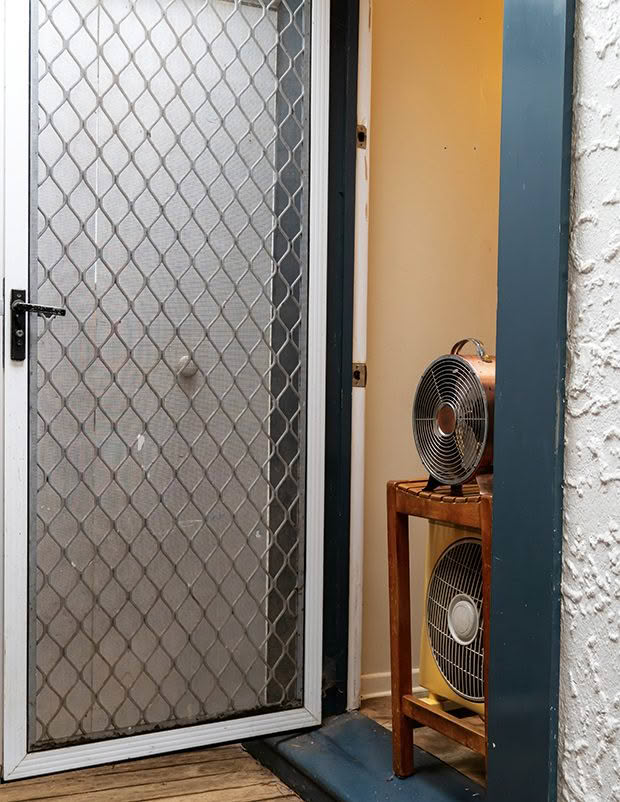
The fans are pointing outside an open door to draw in cool air at the other end of the house.
At some point in the late afternoon or early evening, the temperature outside drops below the temperature inside. It’s handy to have an indoor/outdoor thermometer to measure the temperatures.
This is the time to open windows at one end of the house, and turn on a large exhaust fan pointing out a window at the other end. This draws the warm air out and pulls cool air in to replace it.
Run the fan all night long until the outdoor temperature exceeds the indoor temperature or when you have to go to work.
Keep curtains of east-facing windows drawn to reduce solar gain from the morning sun.
Provided your house is well-insulated and has adequate eaves, it should stay cool throughout the day until the point where the outdoor temperature drops below the indoor temperature.
If your house does heat up, repeat the transfer system for cool nights.
HOW TO RETROFIT EXISTING HOMES?

While the same guidelines apply, retrofitting is always more difficult, and a couple of extra steps may be required. Here are strategies to follow for existing homes.
1) Top up ceiling insulation to about 30cm.
2) Keep curtains or blinds drawn or partially drawn on the sunny side of the home at any time of day direct sun hits them.
3) Plant deciduous trees to the north and northwest to block summer sun but allow winter sun through.
4) Facilitate nighttime cooling (with a heat transfer system).
5) Leave all curtains drawn during the day as long as tolerable to hold the cool air inside.
The overall strategy is to treat your home like a wind tunnel at night and a chilly bin during the day. It is by far the least expensive option for home cooling.
For our home we place one or two fans on a barstool blowing air out the screen door of our laundry, which is in the northwest corner. At the same time, we open only the windows of occupied bedrooms – using fly screens to keep out the mozzies.
The use of fans has been virtually undetectable on our power bill over past summers, and we’ve never lost a minute of sleep due to a hot and stuffy home, although the occasional mozzie does get in.
Love this story? Subscribe now!
 This article first appeared in NZ Lifestyle Block Magazine.
This article first appeared in NZ Lifestyle Block Magazine.
